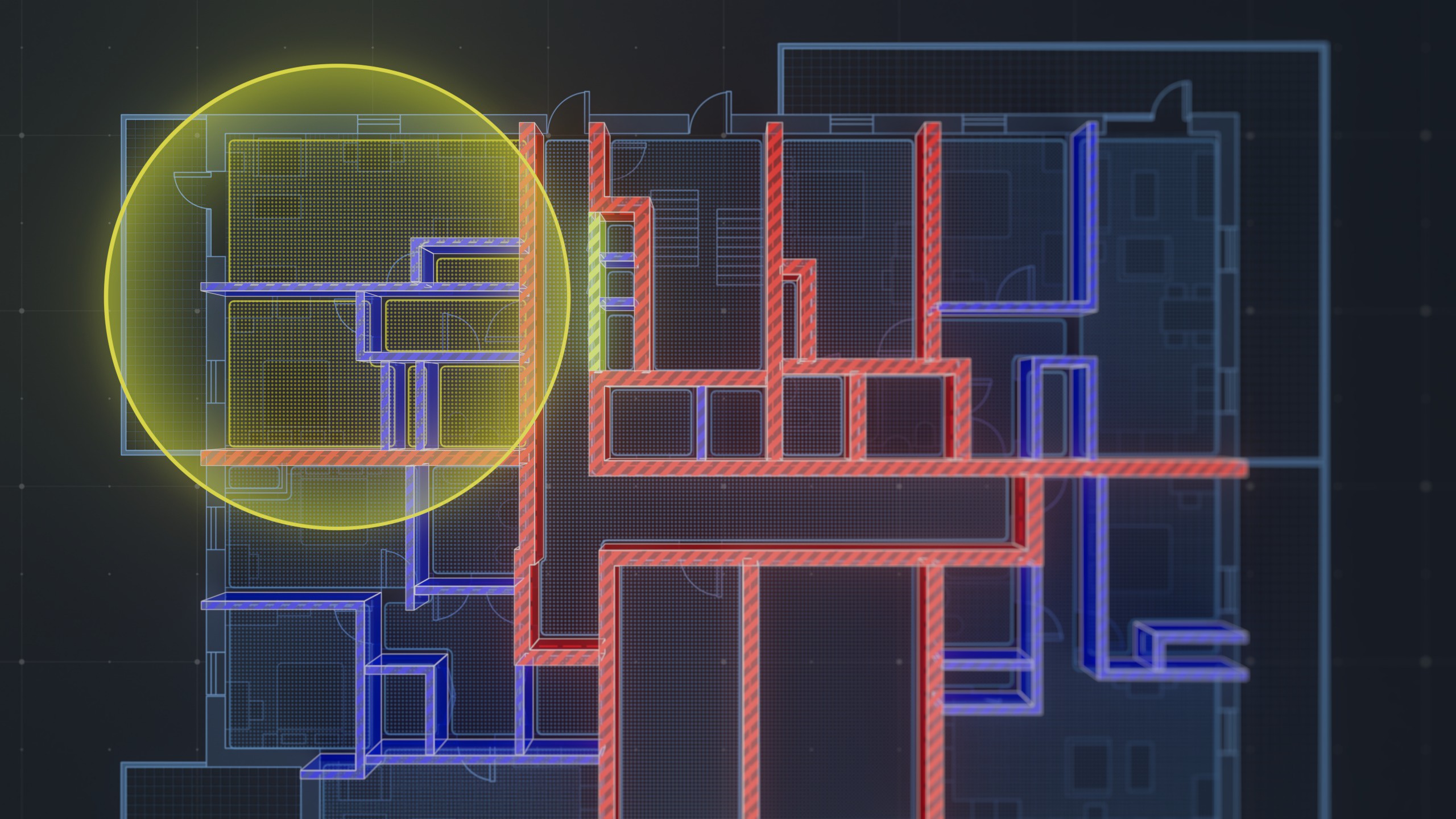In the fast-paced world of construction, accurate and efficient estimation is crucial for successful MEP (Mechanical, Electrical, and Plumbing) projects. Traditionally, MEP takeoff and estimating processes have relied on manual measurements, calculations, and time-consuming tasks that are prone to human errors. However, with the advent of Artificial Intelligence (AI), the landscape of MEP estimating is being revolutionized. AI-powered estimating tools are enhancing accuracy, streamlining workflows, and transforming the way estimators work. In this article, we will explore the role of AI in MEP takeoff and estimating, its benefits in improving accuracy and speed, successful AI implementations, as well as the future trends and potential impact of AI in the construction industry. Join us as we delve into the transformative potential of AI and its implications for the future of MEP estimation.
Introduction
Overview of MEP Takeoff and Estimating Processes
MEP (Mechanical, Electrical, and Plumbing) takeoff and estimating processes are crucial components of construction projects. These processes involve quantifying and estimating the materials, labor, and costs associated with the mechanical, electrical, and plumbing systems required in a building or infrastructure project. MEP takeoff refers to the process of identifying and measuring the quantities of various components, such as pipes, wires, ducts, and fixtures, needed for the MEP systems. Estimating involves calculating the costs based on the quantities obtained during the takeoff process.
The Role of AI in Enhancing Accuracy and Speed
Artificial Intelligence (AI) has emerged as a transformative technology in the construction industry, including MEP takeoff and estimating. AI-powered tools and algorithms can significantly enhance the accuracy and speed of these processes.
Accuracy:
- Pattern Recognition: AI algorithms can analyze large sets of data to identify patterns and make accurate predictions. In the context of MEP takeoff, AI can recognize and classify different components and systems from architectural and engineering drawings, reducing the chances of human error.
- Error Detection: AI can help in identifying inconsistencies, omissions, or errors in the takeoff and estimating processes. By comparing data across multiple sources and conducting automated checks, AI algorithms can flag potential discrepancies, ensuring more accurate estimates.
Speed:
- Automation: AI enables automation of repetitive and time-consuming tasks involved in MEP takeoff and estimating. Software tools can extract relevant data from digital drawings, perform calculations, and generate material quantities and cost estimates much faster than manual methods.
- Data Processing: AI algorithms can process and analyze vast amounts of data in a fraction of the time it would take a human. This speed allows estimators to quickly assess multiple scenarios, perform what-if analyses, and generate accurate estimates in a timely manner.
AI-powered solutions for MEP takeoff and estimating often leverage machine learning, computer vision, natural language processing, and data analytics techniques to improve accuracy and speed. These technologies enable the software to learn from historical data, adapt to different project requirements, and continuously refine the estimating process.
In conclusion, AI plays a pivotal role in enhancing the accuracy and speed of MEP takeoff and estimating processes. By leveraging AI-powered tools, construction professionals can streamline their workflows, reduce errors, and improve the overall efficiency of MEP projects.
Traditional MEP Takeoff and Estimating Challenges
Manual Measurement and Calculations
Traditionally, MEP takeoff and estimating processes heavily relied on manual measurement and calculations. This involved physically measuring components, such as lengths of pipes or cables, and manually calculating quantities and costs based on design drawings and specifications. Manual processes are prone to human errors, including miscalculations, misinterpretations of drawings, and omissions.
Time-Consuming and Error-Prone Processes
Manual MEP takeoff and estimating can be time-consuming and labor-intensive. Estimators need to spend significant amounts of time on-site or reviewing design documents to gather the necessary information. Additionally, the manual calculation of quantities and costs can be tedious and prone to errors. Even experienced estimators can make mistakes or overlook crucial details during the manual process.
Limitations of Traditional Methods
Traditional methods of MEP takeoff and estimating have certain limitations, including:
- Subjectivity: Manual processes can be influenced by personal judgment or interpretation, leading to inconsistencies across estimators. Different estimators may have varying approaches or assumptions, which can result in discrepancies in the final estimates.
- Lack of Collaboration: Manual processes often restrict collaboration among different project stakeholders. Sharing and updating information can be challenging, especially when multiple estimators or teams are involved. This can lead to miscommunication, delays, and difficulties in tracking changes or revisions.
- Difficulty in Handling Complexity: MEP systems in modern buildings have become increasingly complex, with numerous components, interconnected systems, and intricate designs. Manual methods may struggle to handle the complexity and accurately capture all the details, resulting in incomplete or inaccurate estimates.
- Limited Scalability: Manual processes may not scale well for larger or more complex projects. As the project size increases, the manual effort required for takeoff and estimating also grows exponentially, leading to potential delays and increased risks of errors.
By recognizing these limitations, the industry has turned to AI and technological solutions to overcome these challenges and improve the efficiency, accuracy, and speed of MEP takeoff and estimating processes. AI-powered tools and software can automate manual tasks, provide more accurate analysis, and enhance collaboration among project stakeholders.
The Rise of AI in MEP Estimating
Introduction to AI-Powered Estimating Tools
The integration of AI in MEP estimating has revolutionized the construction industry. AI-powered estimating tools leverage advanced technologies such as machine learning, computer vision, and natural language processing to automate and optimize the MEP takeoff and estimating processes. These tools analyze digital drawings, specifications, and historical data to generate accurate material quantities and cost estimates.
Benefits of AI in Improving Accuracy and Speed
The adoption of AI in MEP estimating brings several benefits to the construction industry:
- Enhanced Accuracy: AI algorithms can analyze large datasets and patterns to improve the accuracy of estimating. By automatically recognizing and classifying components from digital drawings, AI tools reduce the risk of human error and inconsistencies. AI algorithms also aid in error detection, identifying potential discrepancies or omissions in the estimating process.
- Increased Speed: AI-powered tools automate repetitive and time-consuming tasks, significantly speeding up the estimating process. These tools can extract relevant data from digital drawings, perform calculations, and generate material quantities and cost estimates much faster than manual methods. The ability to process and analyze vast amounts of data rapidly allows estimators to assess multiple scenarios and perform what-if analyses efficiently.
- Consistency and Standardization: AI-powered tools ensure consistency and standardization in the estimating process. Estimators can rely on the same set of rules and algorithms, reducing variability and improving the overall quality of estimates. This consistency facilitates better collaboration and communication among project stakeholders.
- Scalability: AI-powered estimating tools can handle larger and more complex projects with ease. As the size and complexity of MEP systems increase, AI algorithms can efficiently process the extensive data required for accurate estimates, overcoming the limitations of manual methods.
Examples of Successful AI Implementations in MEP Takeoff
Several successful AI implementations have been observed in MEP takeoff:
- Computer Vision for Component Recognition: AI-powered tools utilize computer vision techniques to recognize and identify components in digital drawings. These tools can automatically detect and quantify pipes, wires, valves, and other MEP components, reducing manual effort and improving accuracy.
- Machine Learning for Cost Estimation: Machine learning algorithms can analyze historical project data, including material costs, labor rates, and project specifications, to predict accurate cost estimates. These algorithms learn from past projects and adapt to new ones, improving the accuracy of estimates over time.
- Automated Quantity Takeoff: AI-powered tools automate the quantity takeoff process by extracting information from digital drawings and generating material quantity reports. These tools can accurately calculate the lengths of pipes, cables, and ducts, as well as the number of fixtures and equipment required for MEP systems.
- Estimating Software Integration: AI is integrated into estimating software to provide intelligent suggestions, automate calculations, and streamline the estimating workflow. These tools can automatically generate itemized cost breakdowns, track changes and revisions, and facilitate collaboration among estimators and other project stakeholders.
Overall, AI implementations in MEP takeoff and estimating have demonstrated significant improvements in accuracy, speed, and efficiency, leading to cost savings, reduced errors, and enhanced project outcomes in the construction industry.
Advantages of AI-Powered MEP Takeoff
Streamlined Material Quantity Calculations
AI-powered MEP takeoff tools streamline the material quantity calculation process by automating the extraction of relevant data from digital drawings. These tools can quickly and accurately identify MEP components, such as pipes, wires, ducts, and fixtures, and calculate their lengths, quantities, and sizes. By eliminating manual measurement and calculations, AI reduces the time and effort required for quantity takeoff, ensuring more efficient and accurate material quantity calculations.
Reduction of Human Error and Rework
One of the significant advantages of AI-powered MEP takeoff is the reduction of human errors and the subsequent need for rework. Manual processes are prone to errors, such as misinterpretation of drawings, miscalculations, or omissions. These errors can lead to costly rework and delays in construction projects. AI tools, on the other hand, leverage advanced algorithms and computer vision techniques to accurately analyze and interpret digital drawings, minimizing the chances of human error. By providing more precise and consistent measurements, AI reduces the need for rework and ensures higher quality and reliability in the takeoff process.
Increased Efficiency and Productivity
The integration of AI in MEP takeoff significantly increases efficiency and productivity. AI-powered tools automate repetitive and time-consuming tasks, allowing estimators to focus on higher-value activities. These tools can quickly extract data from digital drawings, perform calculations, and generate material quantity reports, saving valuable time in the estimation process. The speed and accuracy of AI algorithms enable estimators to handle larger and more complex projects within shorter timeframes. The enhanced efficiency and productivity not only accelerate the estimating process but also free up resources for other critical project tasks, leading to improved overall project efficiency.
Additionally, AI-powered MEP takeoff tools enable better collaboration and communication among project stakeholders. Digital data and automated reporting systems facilitate easy sharing of information and updates, reducing communication barriers and delays. The standardized approach offered by AI tools ensures consistent and reliable estimating practices across different projects and teams, promoting efficiency and coordination.
By streamlining material quantity calculations, reducing human errors, and increasing efficiency and productivity, AI-powered MEP takeoff solutions contribute to more accurate estimates, faster project timelines, and improved project outcomes in the construction industry.
Addressing Concerns and Challenges
Potential Limitations of AI-Powered Estimating
While AI-powered estimating brings significant benefits, it is essential to be aware of potential limitations. Some challenges include:
- Data Accuracy and Quality: AI algorithms heavily rely on accurate and high-quality data for optimal performance. Inaccurate or incomplete data inputs can lead to erroneous results. Therefore, it is crucial to ensure the data used for training and validation is reliable and representative of the project requirements.
- Adaptability to Unique Project Requirements: AI models are trained on historical data, which may not capture all the variations and complexities of every project. Unique project conditions or design specifications may require manual adjustments or expert intervention to ensure accurate estimates.
- Learning and Improvement Over Time: AI algorithms learn from historical data and continually improve with more exposure. Initial estimations may not be as accurate as those derived from experienced estimators. Regular monitoring and feedback loops are necessary to refine AI models and maintain their accuracy.
The Role of Human Expertise in AI-Driven Workflows
While AI can greatly enhance the accuracy and efficiency of MEP estimating, human expertise remains crucial. Estimators bring domain knowledge, experience, and critical thinking skills that complement AI technology. The role of human experts includes:
- Data Verification and Validation: Estimators play a vital role in verifying and validating the results produced by AI-powered estimating tools. They can review the outputs, cross-check against project requirements, and apply their expertise to address any discrepancies or nuances.
- Contextual Interpretation: Estimators understand the unique aspects of each project and can provide context-specific insights that AI algorithms may not capture. They can assess the feasibility of certain design choices, account for site-specific conditions, and consider project constraints that impact estimates.
- Decision-Making and Risk Assessment: Estimators make informed decisions based on a combination of AI-generated outputs, domain expertise, and their understanding of project objectives. They assess risks, evaluate alternative solutions, and consider non-quantifiable factors that AI algorithms may not fully capture.
By combining the strengths of AI technology and human expertise, construction professionals can leverage the benefits of automation while ensuring accurate estimates and project success.
Overall, addressing potential limitations, ensuring data privacy and security, and recognizing the value of human expertise are critical aspects of successfully implementing and utilizing AI-powered estimating tools in MEP workflows.
Case Studies and Success Stories
Real-World Examples of AI-Enhanced MEP Takeoff
One notable example of an AI-powered solution in MEP takeoff is Kreo. Kreo offers various tools and capabilities to streamline the estimating process and improve accuracy.
Auto Count Tool: Kreo's Auto Count tool allows users to quickly find all objects or text in drawings that are similar to the selected one. This feature greatly speeds up the quantity takeoff process by automating the identification and counting of similar components. For MEP systems, this can include pipes, wires, valves, and other relevant objects.

Caddie: Kreo's Caddie module utilizes the advanced language modeling capabilities of ChatGPT (like the one powering this conversation) to analyze textual information contained in construction drawings. By extracting and understanding the text, Caddie can assist in generating accurate material quantity reports and cost estimates, improving the overall accuracy of MEP takeoff.
Quantifiable Results and Improved Project Outcomes
Implementing AI-enhanced MEP takeoff solutions, such as Kreo, has resulted in quantifiable benefits and improved project outcomes for construction companies.
- Increased Accuracy: By leveraging AI algorithms for object recognition and text analysis, estimators have reported improved accuracy in quantity takeoff and cost estimation processes. The automated tools reduce the chances of human errors, ensuring more reliable and consistent results.
- Enhanced Efficiency and Productivity: AI-powered estimating tools significantly speed up the takeoff process by automating repetitive tasks, such as object counting and data extraction. Estimators can generate material quantity reports and cost estimates faster, leading to improved project timelines and increased overall efficiency.
- Cost Savings: The combination of improved accuracy and efficiency can result in cost savings for construction projects. Accurate material quantity calculations enable better procurement planning, reducing the risk of over-ordering or under-ordering materials. Additionally, faster estimating processes free up valuable resources and allow estimators to focus on value-added activities.
- Collaboration and Communication: AI-powered estimating tools facilitate better collaboration among project stakeholders. Digital data and automated reporting systems enable seamless sharing of information, updates, and revisions. This streamlines communication, reduces delays, and improves coordination between estimators, project managers, and other team members.
These case studies and success stories demonstrate the tangible benefits of implementing AI-powered MEP takeoff solutions, such as Kreo. The combination of advanced algorithms, object recognition, and text analysis capabilities contributes to improved accuracy, efficiency, and project outcomes in the construction industry.
Conclusion
The integration of AI in MEP takeoff and estimating processes brings numerous benefits, including increased accuracy, streamlined workflows, reduced errors, improved efficiency, and enhanced collaboration among project stakeholders. AI-powered tools automate repetitive tasks, provide advanced analysis capabilities, and leverage data to generate accurate estimates, leading to cost savings and improved project outcomes.




.png)